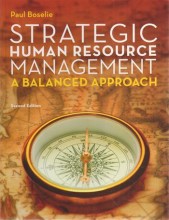Transnational policies
21 important questions on Transnational policies
What were the economic costs associated with air pollution from European industrial facilities in 2015, according to the European Environmental Agency?
- Economic costs from air pollution: > EUR 100 billion.
- Effects: Damage to health and environment.
- Reduction in life expectancy.
What are carbon tax and cap-and-trade, and how do they address externalities?
- Carbon tax: CO2 belasting.
- Cap-and-trade: Emission rights.
- Purpose: Include externalities in price.
Describe the concept of cap-and-trade as it relates to emissions.
- Cap-and-trade allows trading of emission rights.
- Limits total emissions.
- Companies can buy/sell allowances.
- Higher grades + faster learning
- Never study anything twice
- 100% sure, 100% understanding
How does the graph illustrate the relationship between social and private costs in demand?
- Social cost is higher than private cost.
- Demand curve intersects both costs.
- Shows discrepancy between private decision-making and social impact.
What are the main components of Pigou's solution for externalities?
- Government intervention using centralized instruments
- Employs quantity regulation (e.g., bans)
- Utilizes monetary tools (e.g., taxes, subsidies)
- Focuses on CARBON TAX for regulation
How does Coase propose addressing externalities?
- Government defines and allocates entitlements
- Market functions through Coasean bargains if beneficial
- Firms or entities internalize externalities
- Emphasizes POLLUTION PERMITS for solutions
What are the benefits of companies emitting less than their allowances permit according to Coase's argument?
- Additional funds for sustainability improvements
- Increased financial resources for future projects
- Lower demand for costly allowances
- Incentives for sustainable practices to avoid high prices
What are the key differences between carbon tax and cap-and-trade?
- Carbon Tax:
- - Tax on each unit of greenhouse emissions.
- - Incentive to reduce pollution.
- - Importance of setting the correct tax level.
- - Bigger initial financial impact.
- - Set price of pollution, unknown total emissions.
- Cap and Trade:
- - Maximum emissions allowance.
- - Purchase allowances if exceeded.
- - Creates new commodity.
- - Cheaper early compliance.
- - Emission quantity certainty, cost uncertainty.
What are the differences in financial implications between carbon tax and cap and trade?
- Carbon tax generates revenue for the government.
- Cap and trade allows funds to remain in the market.
- Both systems are implemented in many countries.
Why did the price of carbon dioxide allowances fall to zero in 2007 during the first trading period?
- 2005-2007: First trading period.
- Allowances based on estimated needs were excessive.
- Price of first-period allowances fell to zero in 2007.
- Difficulty in maintaining high CO2 prices due to oversupply.
What happened during the 2nd trading period from 2008-2012 regarding allowances and emissions?
- Surplus of unused allowances
- Lower carbon price
What were the major changes in the 3rd trading period from 2013-2020?
- Introduction of an EU-wide emissions cap
- Cap reduced by 1.74% annually
- 21% reduction target by 2020 compared to 2005
What are the new measures starting from 2021 regarding carbon emissions?
- Linear reduction of 2.2% each year in cap
- Implementation of the Green Deal
- Aiming for a global climate regime
When was Sweden's carbon tax implemented and what makes it unique?
- Being one of the first worldwide
- Having the highest carbon tax rate globally at €120/ton CO2
What impact has Sweden's carbon tax had on emissions and the economy?
- Declining carbon emissions
- Steady economic growth
- Coverage of around 40% of national greenhouse gas emissions
What key factors are important to consider for implementing a carbon tax?
- Scope: Substances covered
- Point of Taxation: Upstream/downstream supply chain
- Tax and Escalation Rates: Align with social cost then increase
- Distributional Impacts: Justice issues affecting vulnerable consumers
- Revenues: Redistribution, infrastructure, innovation investments
What is a critical issue associated with carbon tax and cap-and-trade policies?
- Energy Markets: Lower EU demand leading to cheaper fossil fuels
- Competition: Industry relocating production due to costs
- Free Riding: Others feeling less pressure to reduce emissions
What solutions are proposed to address carbon leakage?
- International cooperation: Implementation of an international cap and trade system
- The EU Green Deal: Must evolve into a global green deal
What challenges exist in achieving climate neutrality across EU countries?
- Diverse Views: Different perspectives and constraints among countries
- Poland's Statement: Unable to become climate neutral by 2050 due to funding issues
What are the essential elements for making international agreements on climate change effective?
- Clear Mandate
- Decisions Structure
- Strong Leadership
- Binding Rules
- Conditionalities
- Strategic Plans
- Monitoring Mechanisms
What factors contribute to the instability of the COP21 Paris Agreement?
- Unstable Agreement: Erosion following Trump's election
- Withdrawal: China and Brazil exited shortly after
- Need for Support: Developing countries require more funding for sustainability
The question on the page originate from the summary of the following study material:
- A unique study and practice tool
- Never study anything twice again
- Get the grades you hope for
- 100% sure, 100% understanding































